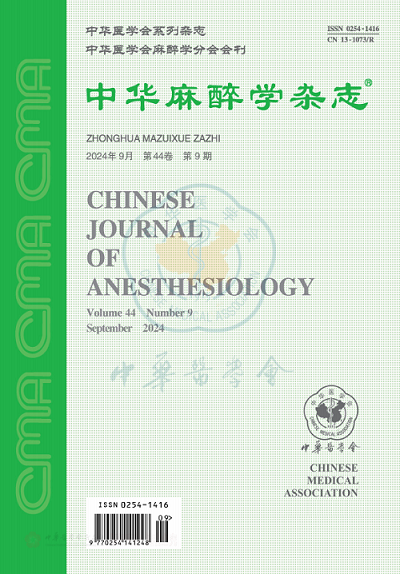Effect of compound electrolyte injection on phosphatidylserine exposure in erythrocytes after blood salvage-retransfusion in dogs
Q4 Medicine
引用次数: 0
Abstract
Objective To evaluate the effect of compound electrolyte injection on phosphatidylserine (PS) exposure in erythrocytes after blood salvage-retransfusion in dogs. Methods Twenty healthy mongrel dogs, weighing 10-15 kg, aged 3-5 weeks, were divided into 2 groups (n=10 each) using a random number table method: normal saline group (group NS) and compound electrolyte injection group (group MEI). The process of intraoperative blood salvage-retransfusion was simulated in both groups: femoral vein was cannulated for blood withdrawal until the volume of blood lost was 400 ml, and the shed blood was salvaged by a blood recovery machine.The washing solution was normal saline in group NS and compound electrolyte injection in group MEI.The erythrocytes were retransfused after being labeled with fluorescein isothiocyanate.Blood samples were obtained before and after blood salvage for determination of erythrocyte ATP content by enzyme-linked immunosorbent assay.Blood samples were obtained at 24, 48 and 72 h after blood retransfusion, and the PS exposure rate of the salvaged erythrocytes was determined by flow cytometry.The spleen was taken at 72 h after retransfusion to detect the phagocytosis rate of salvaged erythrocytes by monocytes. Results There was no significant difference in ATP content before and after blood salvage between the two groups (P>0.05). Compared with NS group, the PS exposure rate of the salvaged erythrocytes at each time point after retransfusion and phagocytosis rate of salvaged erythrocytes by monocytes were significantly decreased in MEI group (P<0.05). Conclusion Compound electrolyte injection as a washing solution for intraoperative blood salvage can reduce the PS exposure in salvaged erythrocytes and is helpful in prolonging the lifespan of erythrocytes after retransfusion in dogs. Key words: Electrolytes; Erythrocytes; Operative blood salvage; Phosphatidylserines; Monocytes复合电解质注射液对犬血回输后红细胞磷脂酰丝氨酸暴露的影响
目的探讨复合电解质注射液对犬回收再输血后红细胞中磷脂酰丝氨酸(PS)暴露的影响。方法选取体重10 ~ 15 kg、3 ~ 5周龄的健康杂种犬20只,采用随机数字表法分为生理盐水组(NS组)和复合电解质注射组(MEI组),每组10只。模拟两组患者术中回血过程:留置股静脉取血至失血量400ml,放血后经血液回收机回血。NS组为生理盐水,MEI组为复合电解质注射液。红细胞经异硫氰酸荧光素标记后再输注。取采血前后血样,采用酶联免疫吸附法测定红细胞ATP含量。分别于输血后24、48、72 h采血,用流式细胞术测定回收红细胞的PS暴露率。再输后72h取脾,检测单核细胞对抢救红细胞的吞噬率。结果两组患者在补血前后ATP含量差异无统计学意义(P < 0.05)。与NS组比较,MEI组输血后各时间点抢救红细胞的PS暴露率和抢救红细胞被单核细胞吞噬率均显著降低(P<0.05)。结论复合电解质注射液作为术中血液回收的冲洗液,可减少回收红细胞中PS的暴露,有助于延长犬再输血后红细胞的寿命。关键词:电解质;红细胞;手术采血;磷脂酰丝氨酸;单核细胞
本文章由计算机程序翻译,如有差异,请以英文原文为准。
求助全文
约1分钟内获得全文
求助全文

 求助内容:
求助内容: 应助结果提醒方式:
应助结果提醒方式:


